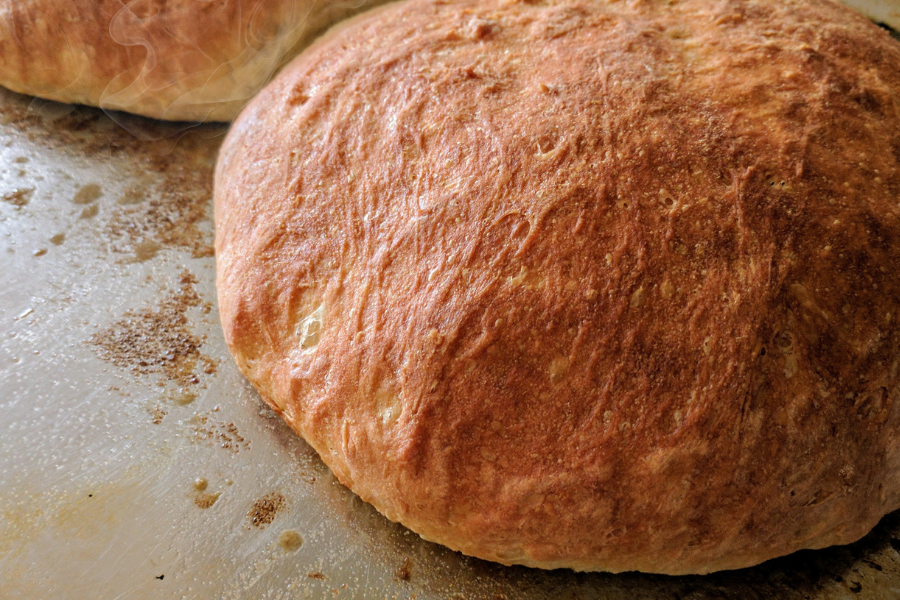
Peasant Bread
This is the kind of bread that fed revolutions and children alike.

Peasant Bread
A no-knead, bowl-to-oven bread with a golden crust and a soft, forgiving heart.
Ingredients
- 1 ½ cups water
- 1 tablespoon white sugar
- 1 ½ teaspoons salt
- 3 ½ cups bread flour
- 2 ½ teaspoons active dry yeast
How The Alchemy Happens
In a large bowl, combine the bread flour, yeast, and salt.
Add 1½ cups lukewarm water (around 100°F) and mix with your hands or a spoon until the dough comes together.
It will be wet and sticky—that’s exactly what you want.
Cover tightly with plastic wrap and let it rise at room temperature for 18 hours.
This long rise gives the bread its depth and texture.
(If you’re in a rush, you can try a 2-hour rise—but bread is a slow, meditative ritual for a reason.)
Once risen, dust a work surface with all-purpose flour.
Turn the dough out, sprinkle more flour on top, and fold the dough:
top to center, bottom to center, then the sides—forming a loose square.
Flip it over, then tuck the corners under to shape a ball.
Line a baking sheet with parchment paper and generously dust with flour.
Place the dough seam-side down, sprinkle with a little more flour, cover with a clean cotton towel (no terry cloth), and let rise again 2–3 hours or until doubled in size.
Position a rack in the bottom of the oven.
Place a 2–4 quart cast iron or enameled Dutch oven (lid off) on the rack and preheat to 450°F for at least 30 minutes.
When the dough is ready, carefully remove the hot pot.
Lift the parchment and gently invert the dough into the pot.
(If needed, shake the pot to center it.)
Cover with the lid and bake for 30 minutes, then uncover and bake another 15–30 minutes, or until deep golden and crusty.
Turn the bread out onto a wire rack and let it cool before slicing (if you can wait that long).
Baking is where memory meets measurement. You follow the steps—and the soul still finds its way in.
